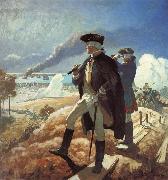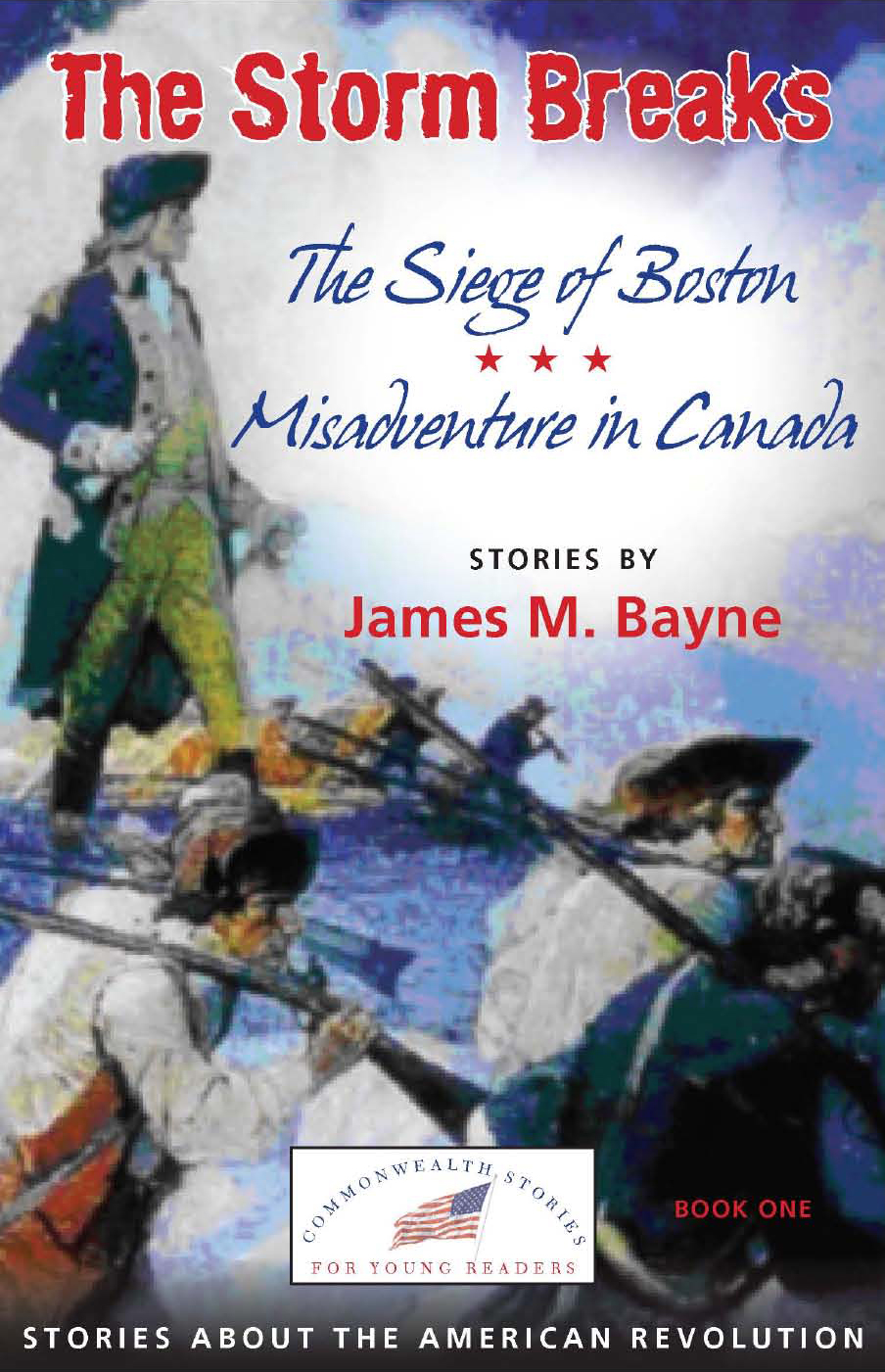1. Reuben Moss
Reuben Moss
 Reuben Moss is a fictional character based on a forbear of the author. The letter from Reuben Moss, which
Reuben Moss is a fictional character based on a forbear of the author. The letter from Reuben Moss, which
begins on page 4, is an interpretive compilation.
2. The report to the Committee of Safety concerning the Battle of Great Bridge
The report to the Committee of Safety concerning the Battle of Great Bridge
This report, which begins on page 8, is an interpretive compilation. Online reference sources:
http://www.gbbattlefield.org/;
http://www.militaryhistoryonline.com/18thcentury/articles/battleofgreatbridge.aspx;
http://www.u-s-history.com/pages/h1045.html.
3. The account of Sam Adams
The account of Sam Adams
 This account, which begins on page 22, is an interpretive compilation. Online reference sources:
This account, which begins on page 22, is an interpretive compilation. Online reference sources:
http://en.wikipedia.org/wiki/Samuel_Adams; http://colonialhall.com/adamss/adamss6.php;
http://library.thinkquest.org/TQ0312848/sadams.htm.
4. Paul Revere’s account of his return to Boston after warning of a possible British incursion
Paul Revere’s account of his return to Boston after warning of a possible British incursion
This account, which begins on page 26, is an interpretive compilation. Online reference sources:
http://www.patriotresource.com/amerrev/people/patriots/revere.html;
http://www.revolutionary-war-and-beyond.com/facts-on-paul-revere.html;
http://www.historycentral.com/Revolt/battleaccounts/lexington.html.
5. John Hancock’s report to the Committee of Safety
John Hancock’s report to the Committee of Safety
This report, which begins on page 27, is an interpretive compilation. Online reference sources:
 http://colonialhall.com/hancock/hancock.php;
http://colonialhall.com/hancock/hancock.php;
http://en.wikipedia.org/wiki/John_Hancock;
http://www.publicbookshelf.com/public_html/Our_Country_vol_2/johnhanco_bd.html.
6. General Gage’s orders to Lt. Colonel Francis Smith
General Gage’s orders to Lt. Colonel Francis Smith
These orders, which appear on pages 30-31, are a modified excerpt from the document.
Online reference sources:
http://www.patriotresource.com/amerrev/people/britisharmy/gage.html;
http://militaryhistory.about.com/od/americanrevolutio1/p/gage.htm;
http://www.u-s-history.com/pages/h1292.html.
7. The account of the skirmish at Lexington
The account of the skirmish at Lexington
This account, which begins on page 31, includes passages from Major Pitcairn’s report.
Online reference sources:
http://www.publicbookshelf.com/public_html/Our_Country_vol_2/battlelex_ff.html;
http://www.freerepublic.com/focus/f-news/2707183/posts;
http://www.winthrop.dk/majpit5.html.
8. Amos Barrett was a real person. His account of the skirmish at Concord Bridge
Amos Barrett was a real person. His account of the skirmish at Concord Bridge
This account, which begins on page 33, is an interpretive compilation based on an account of the event
that he provided 50 years later. For the printed account refer to:
http://www.alibris.com/search/books/qwork/1272134/used/The%20Concord%20fight%3B%20an%20
account%20by%20Amos%20Barrett%3B%20the%20personal%20experiences%20of%20the%20author,
%20who%20participated%20in%20the%20fight.
9. The excerpt from Lt. Colonel Smith’s report
The excerpt from Lt. Colonel Smith’s report
This report, which begins on page 36 is drawn from the document. Online reference sources:
http://www.redcoat.org/history/smith.html;
http://en.wikipedia.org/wiki/Battles_of_Lexington_and_Concord;
http://en.wikipedia.org/wiki/Francis_Smith_(British_Army_officer).
10. The report to the 2nd Continental Congress
The report to the 2nd Continental Congress
This report which appears on page 40 is an interpretive compilation. Online reference sources:
http://www.u-s-history.com/pages/h656.html;
http://memory.loc.gov/ammem/collections/continental/;
http://raglinen.com/2010/04/11/the-arrivial-of-the-second-continental-congress/.
11. Ethan Allen’s report to the Continental Congress
Ethan Allen’s report to the Continental Congress
This report, which begins on page 44, is an interpretive compilation. Online reference sources:
http://en.wikipedia.org/wiki/Ethan_Allen;
http://en.wikipedia.org/wiki/Green_Mountain_Boys;
http://www.uvm.edu/~vhnet/hertour/eallen/eahistory.html.
12. The biographical sketch of Benedict Arnold
The biographical sketch of Benedict Arnold
This sketch, which begins on page 48, is an interpretive compilation. Online reference sources:
 http://en.wikipedia.org/wiki/Benedict_Arnold;
http://en.wikipedia.org/wiki/Benedict_Arnold;
http://www2.si.umich.edu/spies/stories-arnold-3.html.
13. General Clinton’s account of the proceedings of the council the war on June 17, 1775
General Clinton’s account of the proceedings of the council the war on June 17, 1775
This account, which begins on page 60, is a modified excerpt from the document. Online reference sources:
http://www.patriotresource.com/amerrev/people/britisharmy/clinton.html;
http://militaryhistory.about.com/od/americanrevolutio1/p/hclinton.htm;
http://en.wikipedia.org/wiki/Henry_Clinton_(American_War_of_Independence).
14. The account of the Battle of Bunker Hill
The account of the Battle of Bunker Hill
This account which beings on page 61, is an interpretive compilation. Online reference sources:
http://www.britishbattles.com/bunker-hill.htm;
http://www.masshist.org/bh/.
15. The biographical sketch of General Israel Putnam
The biographical sketch of General Israel Putnam
This sketch, which begins on page 65, is an interpretive compilation. Online reference sources:
http://compmast.tripod.com/putnam/putnam.html;
http:/ww.connecticutsar.org/patriots/putnam_israel.htm.
16. Benjamin Edes’s account of Colonel Henry Knox and his recovery of the guns from Fort Ticonderoga
Benjamin Edes’s account of Colonel Henry Knox and his recovery of the guns from Fort Ticonderoga
This account, which begins on page 72, is an interpretive compilation. Online reference sources:
http://www.ushistory.org/valleyforge/served/knox.html;
http://militaryhistory.about.com/od/army/p/knox.htm.
17. Richard Hudnut was a fifer in the Continental Army
Richard Hudnut was a fifer in the Continental Army
His account of Colonel Knox’s mission, which begins on page 74, is an interpretive compilation.
Online reference sources:
http://www.nysm.nysed.gov/services/KnoxTrail/kthistory.html.
18. General John Thomas commanded the troops that placed the guns on Dorchester Heights
General John Thomas commanded the troops that placed the guns on Dorchester Heights
His account of the event, which begins on page 78, is an interpretive compilation.
Online reference sources:
http://en.wikipedia.org/wiki/Fortification_of_Dorchester_Heights;
http://www.dotnews.com/dorheights.html ;
http://en.wikipedia.org/wiki/John_Thomas_(general).
19. The passage from the Address to the People of Great Britain
The passage from the Address to the People of Great Britain
This address, which begins on page 83 is an excerpt from the document. Online reference sources:
http://toto.lib.unca.edu/findingaids/books/kelly_lynn_harrison_collection/address_people_gb_to
_inhabitants/address_people_gb_to_inhabitants.htm; http://oll.libertyfund.org/?option=com_staticxt&
staticfile=show.php%3Ftitle=2326&chapter=219929&layout=html&Itemid=27.
20. The passage from the Address to the People of Ireland
The passage from the Address to the People of Ireland
This address, which begins on page 84, is an excerpt from the document. Online reference sources:
http://avalon.law.yale.edu/18th_century/contcong_07-28-75.asp;
21. General Philip Schuyler was the original commander of the expedition to Canada
General Philip Schuyler was the original commander of the expedition to Canada
His report to the Congress, which appears on page 85, is an interpretive compilation.
Online reference sources:
http://www.nysm.nysed.gov/albany/bios/s/phschuyler1750.html;
http://www.iment.com/maida/familytree/henry/bios/genphilipjohnschuyler.htm.
22. Benedict Arnold was in command of the second American force sent to Canada
Benedict Arnold was in command of the second American force sent to Canada
The summary of his plan, which begins on page 86, is an interpretive compilation.
Online reference sources:
http://canadachannel.ca/HCO/index.php/2._Battles_of_the_American_Revolution.
23. General Montgomery did follow the route described
General Montgomery did follow the route described
His reports on his progress, which begin on page 91, are interpretive compilations.
Online reference sources:
http://www.revolutionarywararchives.org/montgomery.html;
http://www.iment.com/maida/familytree/henry/bios/richardmontgomery.htm.
24. Aaron Burr did serve on General Washington’s staff during the American retreat from New York
Aaron Burr did serve on General Washington’s staff during the American retreat from New York
and did accompany Colonel Arnold’s army to Quebec. His account of the hardships it encountered,
which begin on page 99, is an interpretive compilation. Online reference sources:
http://www.let.rug.nl/usa/B/aburr/burr.htm;
http://www.aaronburrassociation.org/;
http://books.google.com/books?id=G4d2RX8dpTcC&pg=PA224&lpg=PA224&dq=Aaron+Burr's+march+
to+canada&source=bl&ots=h6gYRAWX7Z&sig=LG0B4xONMSwP5mlQ1jQxQHpU-_8&hl=en&ei=
-Wy4TcCnF5TftweQ9-nfBA&sa=X&oi=book_result&ct=result&resnum=4&ved=0CCwQ6AEwAw
#v=onepage&q&f=false
25. General Montgomery’s account of events prior to the attack on Quebec
General Montgomery’s account of events prior to the attack on Quebec
This account, which begins on page 106, is an interpretive compilation. Online reference sources:
http://www.britishbattles.com/battle-of-quebec-1775.htm;
http://www.patriotresource.com/amerrev/battles/quebec/page2.html;
http://en.wikipedia.org/wiki/Battle_of_Quebec_(1775).
26. Lt. Colonel Donald Campbell was second in command to General Montgomery during his attack
Lt. Colonel Donald Campbell was second in command to General Montgomery during his attack
on Quebec. His report of General Montgomery’s death, which begins on page 107, is an interpretive
compilation. See Item [25]
27. Colonel Arnold’s account of his attack on the city
Colonel Arnold’s account of his attack on the city
This account, which begins on page 110, is an interpretive compilation. See Item [25]
28. Margaret Kemble Gage was the wife of General Thomas Gage
Margaret Kemble Gage was the wife of General Thomas Gage
She is thought to have passed information to American Patriots in Boston. The account of Guy
Carlton, which begins on page 112, is an interpretive compilation. Online reference sources:
http://en.wikipedia.org/wiki/Margaret_Kemble_Gage;
http://www.enotes.com/topic/Margaret_Kemble_Gage.







